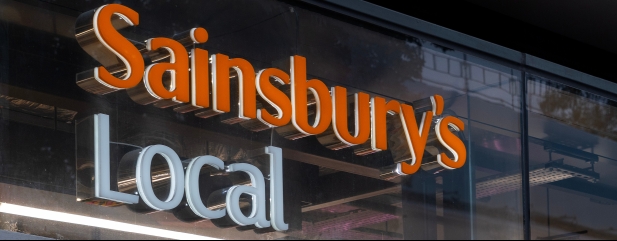Archived article
Please note that tax, investment, pension and ISA rules can change and the information and any views contained in this article may now be inaccurate.
Sainsbury’s has become a beacon of calm in a turbulent market

AJ Bell is an easy to use, award-winning platform Open an account
We've accounts to suit every investing need, and free guides and special offers to help you get the most from them.
You can get a few handy suggestions, or even get our experts to do the hard work for you – by picking one of our simple investment ideas.
All the resources you need to choose your shares, from market data to the latest investment news and analysis.
Funds offer an easier way to build your portfolio – we’ve got everything you need to choose the right one.
Starting to save for a pension, approaching retirement, or after an explainer on pension jargon? We can help.
Please note that tax, investment, pension and ISA rules can change and the information and any views contained in this article may now be inaccurate.

Judging by how well shares in Sainsbury’s (SBRY) have held up during the global market sell-off, investors are betting the UK’s second-largest supermarket chain won’t deliver a nasty surprise when it reports its results for the year to the end of March on 17 April.
The firm published an ‘aide-memoire’ a few months ago repeating its guidance from the third quarter that underlying operating profit for the retail business would be in line with consensus and the midpoint of its target range of £1.01 billion to £1.06 billion representing 7% growth on the previous year.
The increase is mainly expected to come from continued operating leverage from volume growth in grocery, an uplift in the profit contribution from the Nectar card programme and cost savings.
Financial services profit is seen slightly above the previous range at around £30 million, while retail free cash flow should be at least £500 million.
It has been helped by weak performances from Asda and Morrisons, both owned by private equity, and by shoppers turning away from the discounters.
However, the first three months of 2025 have seen Aldi and Lidl return with a vengeance, taking their combined market share for the 12 weeks to 23 March to a new record of 18.8%, even though Sainsbury racked up its 35th consecutive month of rising sales.
Promotions ramped up to 28.2% of total grocery spending in March, the highest level for four years, which is good news for customers but not great for shareholders.
Therefore, investors will need to watch for comments on whether Sainsbury’s is planning to invest heavily in pricing in 2025 to protect its market share at the expense of profits, or whether it can rely on Nectar, operational leverage and cost efficiencies to drive earnings growth.
These articles are provided by Shares magazine which is published by AJ Bell Media, a part of AJ Bell. Shares is not written by AJ Bell.
Shares is provided for your general information and use and is not a personal recommendation to invest. It is not intended to be relied upon by you in making or not making any investment decisions. The investments referred to in these articles will not be suitable for all investors. If in doubt please seek appropriate independent financial advice.
Investors acting on the information in these articles do so at their own risk and AJ Bell Media and its staff do not accept liability for losses suffered by investors as a result of their investment decisions.
The value of your investments can go down as well as up and you may get back less than you originally invested. We don't offer advice, so it's important you understand the risks, if you're unsure please consult a suitably qualified financial adviser. Tax treatment depends on your individual circumstances and rules may change. Past performance is not a guide to future performance and some investments need to be held for the long term.
 magazine
magazine